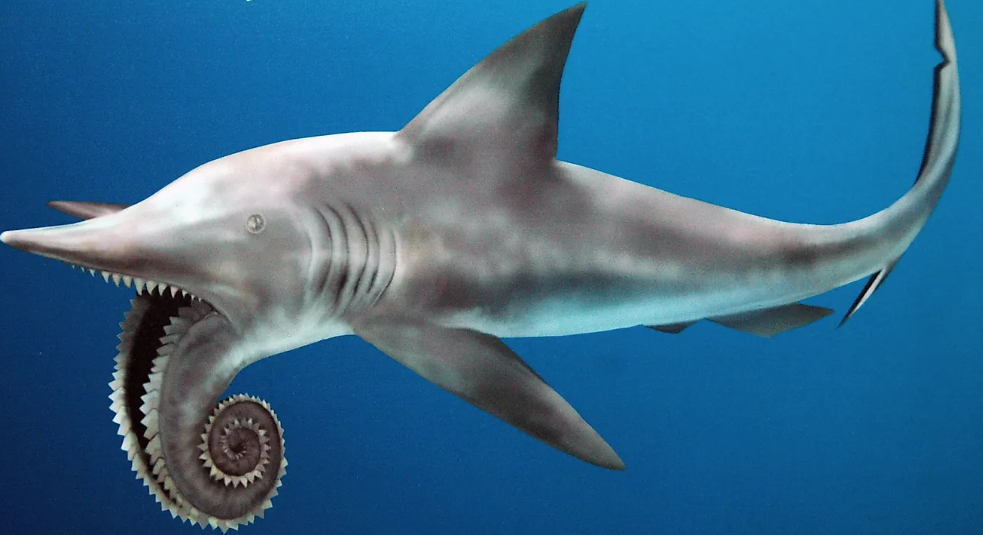Helicoprion is an extinct genus of shark that lived during the Permian period, approximately 290 to 250 million years ago. It is known for its unusual spiral arrangement of teeth, which has led to much speculation and debate among scientists.
The most distinctive feature of Helicoprion is its “tooth whorl,” a spiral of teeth that forms a unique, circular structure. For many years, the exact placement of this tooth whorl within the animal’s body was a subject of mystery and contention. Initially, researchers proposed various positions for the tooth whorl, including on the dorsal fin, as a saw-like structure on the lower jaw, or even as a tail weapon. It wasn’t until the 1950s that new fossil discoveries and advances in understanding shark anatomy led to the realization that the tooth whorl was located in the lower jaw, functioning as a crushing mechanism.

The exact diet and feeding behavior of Helicoprion remain uncertain, but it’s generally believed that this unique tooth structure was used to crush the shells of ancient cephalopods and other marine organisms, similar to the feeding strategy of modern-day rays.
While the overall appearance and biology of Helicoprion remain somewhat mysterious due to the incomplete nature of the fossil record, paleontologists have been able to reconstruct its likely appearance and behavior based on the available evidence. The iconic spiral tooth whorl of Helicoprion continues to fascinate scientists and laypeople alike, making it one of the most enigmatic and intriguing creatures in the fossil record.



